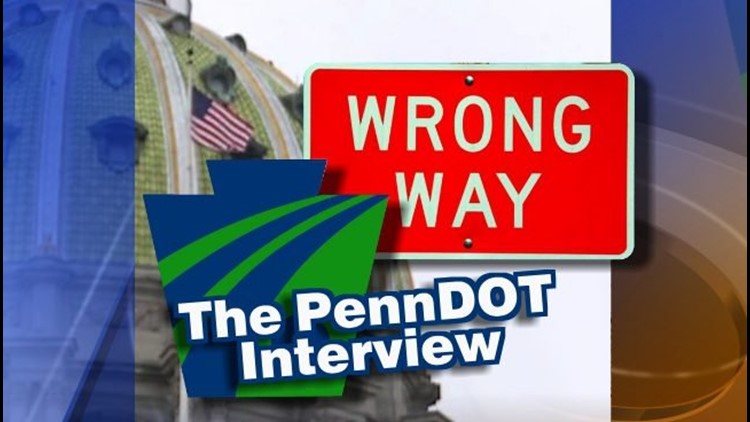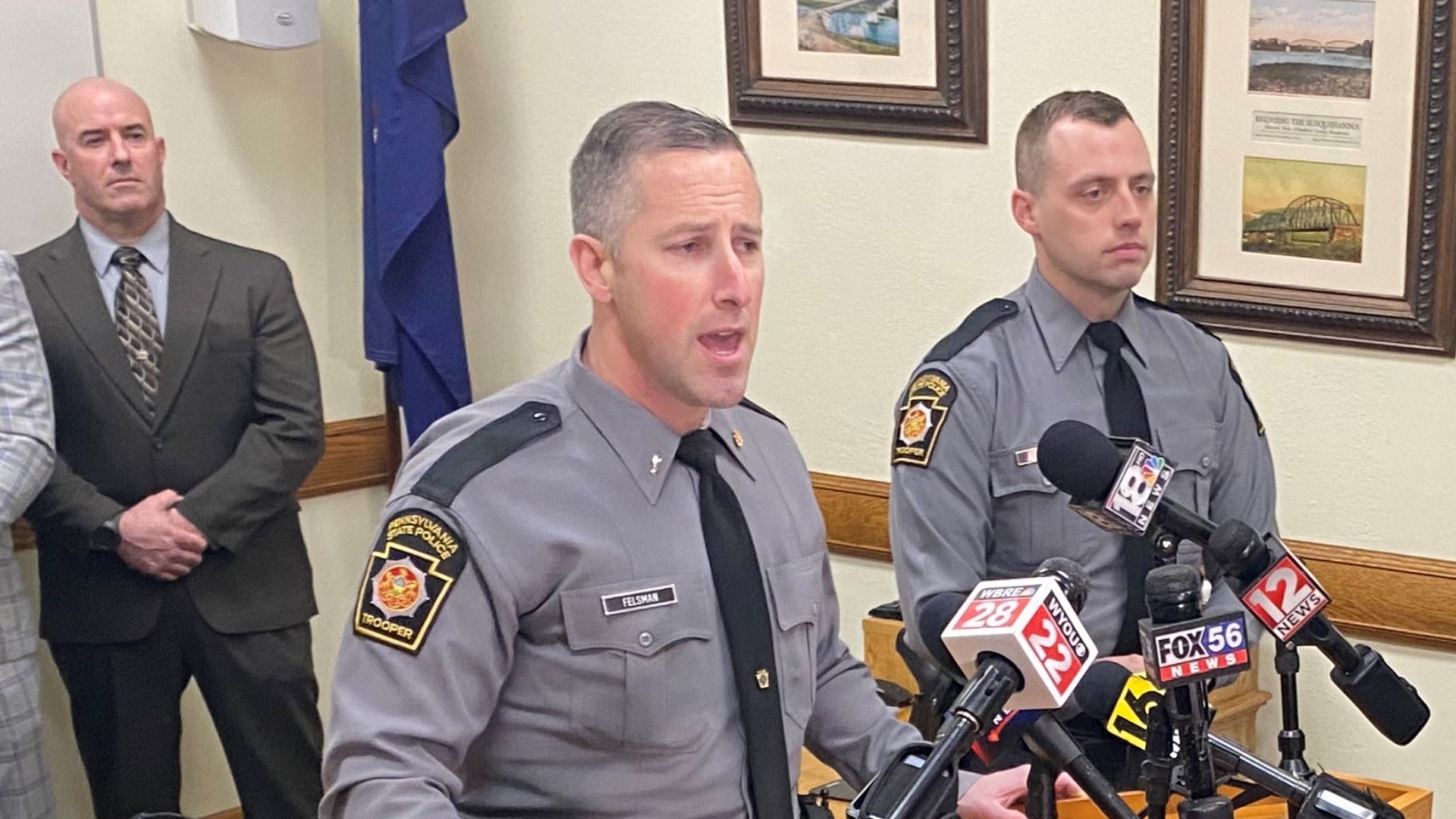HARRISBURG -- The problem of wrong-way driving in our area lately has received so much attention, and so much reaction from our viewers, that Newswatch 16 traveled to Harrisburg to talk with the head of PennDOT.
It appears as though Pennsylvania is in the middle of elaborate research studies on an issue Newswatch 16 has been reporting on this month: wrong-way driving on interstate highways.
Pennsylvania is among nearly a half dozen states in the northeast taking part in research focused on wrong-way driving on highways.
We received this information when we met in Harrisburg with the head of PennDOT, Secretary Leslie Richards.
Richards was appointed by Governor Tom Wolf last year soon after he took office. She now heads up PennDOT, the Pennsylvania Department of Transportation.
In this story
It's a tall task considering she oversees the construction, maintenance and safety of more than 40,000 state roads and highways and 25,000 bridges.
We gave Secretary Richards the opportunity to watch a Newswatch 16 special assignment report about wrong-way driving crashes that seem to have spiked recently in our area.
The report also focused on how successful a wrong-way driving detection system has been in a few states, including in Rhode Island, where its system went on line last fall.
Our first question: what about Pennsylvania?
"Look, we're open to anything that makes our roadways safer. Right now we are compiling data and we have contributed to a multi-state study. The study should be finished this summer, where several states have combined resources, and we are looking at national data," said Richards.
During our interview, Secretary Richards revealed that Pennsylvania is among 11 states in the northeast along with two provinces in Canada, now part of a huge research project to study wrong-way driving and what should be done to prevent it.
Another study gets underway this month.
"And so we're very eager, and as soon as we get that data that's been going on for nearly a year now, as soon as we get that, we will take a look at that, along with our historic data and see which areas in the commonwealth would make most sense for us to start."
Many on-off ramps from interstates in our area are designed side by side. If you make a wrong turn, you could easily end up going the wrong way.
Rhode Island has many ramps like that as well. One too many crashes convinced the state to install a wrong-way driving detection system.
"It was really a result of all the fatalities in recent years that resulted from wrong-way driving that really spurred us to take that step," said Bob Rocchio, Rhode Island Department of Transportation.
Our area has had at least six wrong-way crashes on interstates since October of 2015.
Nine people were killed.
Our report also focused on how the state of Rhode Island is one of the few states that has a wrong-way driving detection system. Rhode Island's operation has successfully prevented crashes since it went on line in October.
Would Pennsylvania even consider what Rhode Island has?
"Of course, of course," said Richards. "Again, we have to take a look at our data. We don't want to jump too early because we don't want to spend our money in areas, again, where it won't have the most impact."
The data the secretary is talking about is coming from an ongoing research project called "Countermeasures for Wrong-Way Driving on Freeways."
Pennsylvania and Rhode Island are among 11 states in the northeast collecting the information on how to prevent drivers from getting on highways the wrong way. A final report is expected in July.
Along with its sophisticated system, Rhode Island has also taken other lower cost measures to help prevent wrong-way driving.
The state lowered its "wrong way" and "do not enter" signs on exit ramps so that they are more at eye level with drivers.
"I was very intrigued by the discussion of lowering signs because that's where impaired drivers tend to be focused. So we have to be smart in how we invest. Again, so we have the biggest impact on these issues."
And then there are the electronic highway message boards.
To her knowledge, Secretary Richards does not believe Pennsylvania's existing boards have ever been used to flash information to warn drivers going the right way that a wrong-way driver might be approaching.
"Any way to warn them ahead of time that this upcoming danger is there, I think is one that we should definitely look at," said Richards.
But whether it is lowering signs, using electronic message boards or perhaps, someday, operating a wrong-way driving detection system, our conversation with the head of PennDOT always went back to money, making sure that whatever taxpayer dollars are spent, the money is spent in the best way possible.
And that is especially true when there is only so much federal highway safety money that can be used for things like this.
Regardless of the money, it is safe to say that PennDOT is not ignoring the problem of wrong-way driving on the interstates.
The state is also monitoring a similar research project about wrong-way driving by the National Academies of Sciences, Engineering, and Medicine set to begin this month.



